Budgerigars, commonly known as budgies, are small and colorful parakeets that have captured the hearts of bird enthusiasts worldwide. With their vibrant feathers, playful personalities, and remarkable ability to mimic human speech, budgies have become one of the most popular pet birds.
However, despite their widespread presence in households, many aspects of budgie behavior remain intriguing and mysterious. One fascinating phenomenon observed in budgies is the pinning of their eyes, which often raises the question: Why do budgies pin their eyes?
This peculiar behavior, characterized by their pupils’ rapid contraction and dilation, has puzzled researchers and pet owners alike. Understanding the reasons behind this eye-pinning behavior can provide valuable insights into these delightful avian companions’ emotional states, social interactions, and sensory perceptions.
This article will delve into the intricacies of budgie behavior, explore the possible explanations for pinned eyes, and shed light on the physiological and environmental factors contributing to this fascinating display.
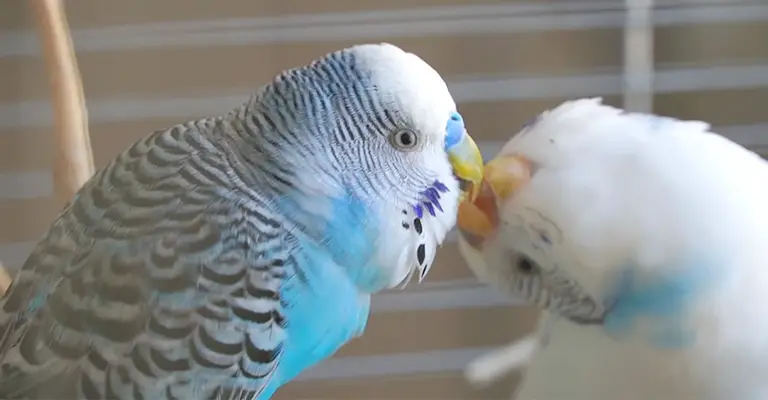
Why Do Budgies Pin Their Eyes?
When observing budgerigars, you may notice a curious behavior where their eyes seem to contract and dilate rapidly, commonly called “pinned eyes.”
This intriguing behavior has sparked the curiosity of budgie owners and researchers, leading to the question: Why do budgies pin their eyes?
Emotional States And Arousal
Budgies may pin their eyes as a response to excitement or heightened arousal. This behavior is often observed when encountering something novel or engaging, such as new toys or treats. Pinned eyes could indicate the budgie’s heightened interest or anticipation.
Communication And Social Interactions
Eye pinning in budgies can also serve as a form of communication. When a budgie pins its eyes while interacting with other budgies, it may convey aggression or territorial behavior. This behavior is a warning sign to establish dominance or defend their space.
Fear And Anxiety
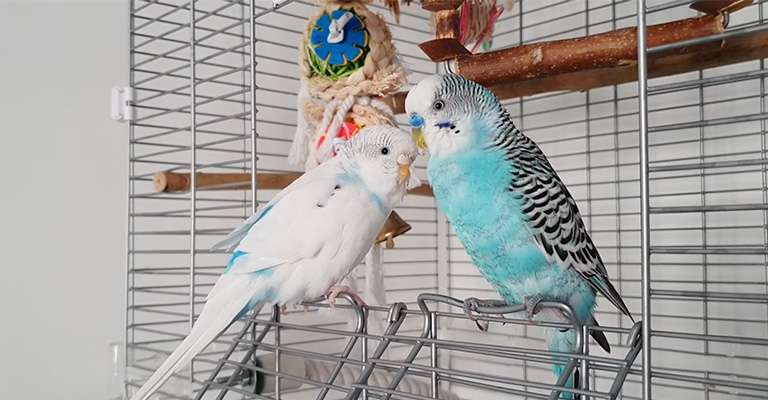
In some cases, pinned eyes in budgies may indicate fear or anxiety. Environmental stressors, loud noises, sudden movements, or unfamiliar surroundings can trigger this response. In such contexts, pinned eyes suggest the budgie’s need to assess potential threats and be alert.
Curiosity And Intrigue
Budgerigars are naturally curious creatures; pinned eyes may indicate their interest or intrigue. When a budgie encounters something unfamiliar, intriguing, or puzzling, it may display this behavior to focus its attention and gather more information.
Physiological Mechanisms
Pinned eyes result from the intricate interplay between the budgie’s anatomy and nervous system. The iris muscles control the pupils’ rapid contraction and dilation.
This physiological response is associated with changes in light intake, regulating the amount of visual information the budgie processes.
Individual Differences And Context
Recognizing that not all budgies pin their eyes in the same situations is essential. Personality traits, past experiences, and context can influence whether a budgie exhibits this behavior.
Understanding the specific circumstances and individual differences can provide deeper insights into the reasons behind eye pinning.
The Physiology Behind Pinned Eyes
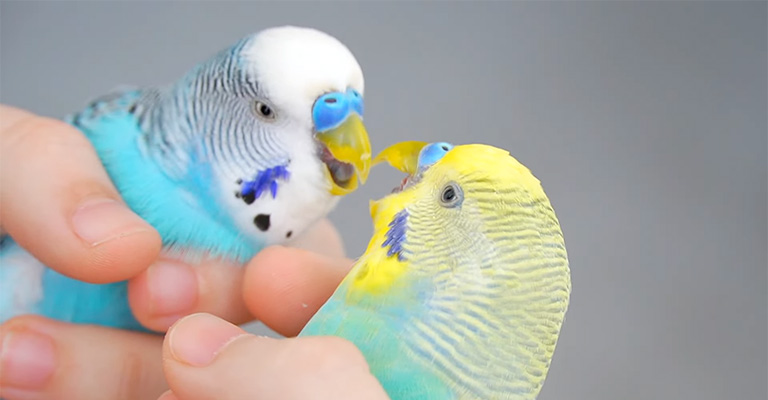
The physiology behind pinned eyes involves the intricate anatomy of budgerigar eyes, the role of pupils in regulating light intake, and the nervous system responses associated with this behavior. Let’s explore each of these aspects in detail.
Anatomy Of Budgerigar Eyes
Budgerigars possess a unique visual system that aids their survival in diverse environments. Their eyes are positioned on the sides of their heads, allowing for a wide field of vision.
The structure of their eyes includes various components such as the cornea, iris, lens, and retina. Each design is crucial in processing visual information and facilitating eye-pinning behavior.
Role Of Pupils In Regulating Light Intake
The pupils of budgerigars play a vital role in regulating the amount of light that enters their eyes. Pupils contract and dilate to control the amount of light reaching the retina, which is responsible for converting light into electrical signals for visual processing.
When budgies pin their eyes, their pupils rapidly constrict and expand, suggesting a heightened sensory response to their surroundings.
Nervous System Responses Associated With Pinned Eyes
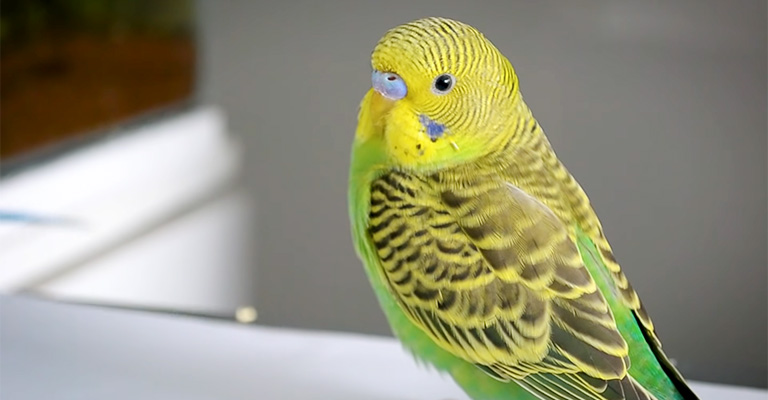
The pinning of budgerigar eyes is closely linked to the autonomic nervous system, which controls involuntary bodily functions.
This behavior reflects the bird’s physiological response to external stimuli, such as excitement, fear, or curiosity. The autonomic nervous system triggers rapid changes in pupil size, indicating the budgie’s emotional or sensory state.
The interplay between the anatomy of budgerigar eyes, the role of pupils in light regulation, and the activation of the autonomic nervous system sheds light on the underlying physiology behind pinned eyes.
By examining these intricate mechanisms, we can better understand how budgies perceive and respond to their environment, unraveling the mystery of this captivating avian behavior.
Observing Pinned Eyes In Different Contexts
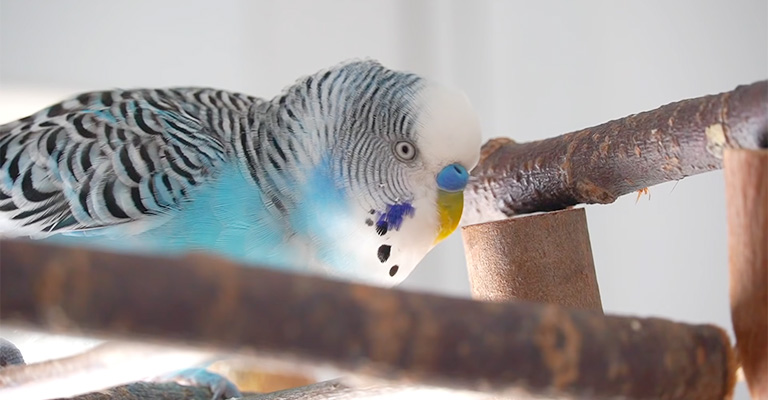
Understanding the contexts in which budgies pin their eyes is crucial for unraveling the meaning behind this intriguing behavior. Budgerigars exhibit eye-pinning in various situations, including interactions with humans, socializing with other budgies, and exposure to new environments.
By closely observing these different contexts, we can gain valuable insights into budgies’ underlying motivations and emotional states.
Interactions With Humans:
When engaging with their human companions, budgies may pin their eyes as a sign of excitement or anticipation. This behavior often occurs during play, bonding, or receiving treats or attention.
Pinned eyes, accompanied by vocalizations and fluffed feathers, may indicate a positive response to human interaction. On the other hand, if budgies perceive any threats or discomfort during human interactions, such as sudden movements or loud noises, they may also pin their eyes as a response to fear or anxiety.
Interaction With Other Budgies
Budgerigars are highly social birds, and their interactions with fellow budgies can elicit eye-pinning. When budgies engage in courtship rituals or playful interactions with other flock members, they may pin their eyes as a display of heightened excitement and interest.
Conversely, eye pinning during social interactions can signify dominance or aggression, especially when accompanied by aggressive body postures, vocalizations, and territorial behaviors.
Exposure To New Environments
When introduced to unfamiliar environments or novel stimuli, budgies may display eye pinning as a response to curiosity or intrigue. Exploring a new cage, encountering new toys, or being exposed to different sounds and scents can trigger this behavior.
It is their way of adapting to and assessing their surroundings. However, in some cases, eye pinning in new environments can also indicate a sense of unease or caution, especially if the budgies perceive potential threats or unfamiliar stimuli that make them feel uneasy.
We can gain valuable insights into their emotions, social dynamics, and sensory perceptions by carefully observing budgies in these different contexts.
Understanding the triggers and meanings behind pinned eyes in various situations can contribute to providing appropriate care, creating enriching environments, and fostering positive interactions with these charming feathered companions.
Recognizing Individual Differences In Pinned Eyes
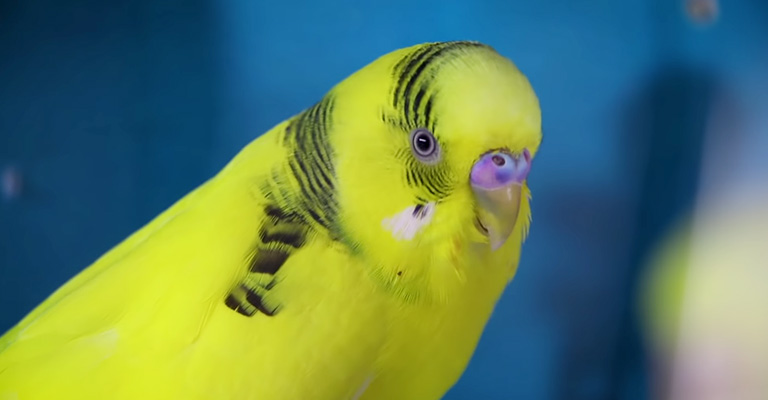
Within the budgie community, it is evident that not all birds display the same behaviors, including eye pinning. Budgies, like humans, possess unique personalities and characteristics that influence their behavior. Age and maturity can also play a role in how budgies exhibit eye-pinning behavior.
Variation In Budgie Personalities:
Just as humans have different personalities, budgies also exhibit individual variations. Some budgies may be naturally curious and outgoing, while others are reserved or shy. These personality differences can influence the frequency and intensity of eye pinning.
For example, an outgoing and adventurous budgie might often pin its eyes when exploring new toys or interacting with its human companions. In contrast, a more cautious budgie may display less frequent eye pinning in similar situations.
Impact Of Age And Maturity On Eye Pinning Behavior:
Age and maturity are significant factors in budgie behavior, including eye pinning. Young budgies, particularly during adolescence, may display more frequent eye pinning as they explore their surroundings, learn social cues, and establish their place in the flock or human family.
As budgies mature, their eye-pinning behavior may change or become less pronounced. Older budgies may display less frequent eye pinning due to increased familiarity with their environment and reduced levels of excitability.
Environmental Factors
In addition to personality and age, environmental factors can influence individual differences in eye-pinning behavior. Budgies living in enriched environments with plenty of toys, social interactions, and mental stimulation are likely to exhibit more varied eye-pinning behaviors than those living in monotonous or isolated conditions.
Similarly, other budgies or animals in the household can impact eye-pinning behavior, with social interactions and hierarchy dynamics playing a role.
Health And Well-Being
The health and overall well-being of budgies can also affect their eye-pinning behavior. Budgies that are unwell, stressed, or experiencing discomfort may exhibit changes in their eye-pinning patterns.
It is essential for budgie owners to closely observe their birds’ eye-pinning behavior and consider any accompanying signs of illness or distress, such as changes in appetite, feather condition, or vocalizations.
Learning And Training
Budgies are highly intelligent and can be trained to perform various tricks or behaviors. The process of training can influence their eye-pinning behavior.
As budgies learn and associate specific cues with positive experiences, such as receiving treats or praise, they may display more eye pinning as a sign of focus and anticipation during training sessions.
Individualized Observations:
To recognize individual differences in eye pinning, budgie owners should spend quality time observing their birds’ behavior. By familiarizing themselves with their budgies’ personalities, age-related changes, environmental factors, and overall well-being, owners can better understand the nuances of their birds’ eye pinning patterns.
This knowledge can contribute to a stronger bond between the budgie and its owner and enable the provision of appropriate care and enrichment.
Practical Implications For Budgie Owners
As budgie owners, it is essential to provide a conducive environment that promotes the well-being and happiness of our feathered companions.
Additionally, establishing positive interactions and recognizing signs of distress or discomfort is crucial for their health. Here are some practical implications to consider:
Creating A Safe And Enriched Environment For Budgies:
- Cage setup: Ensure an adequately sized cage with appropriate perches, toys, and accessories.
- Diet and nutrition: Provide a balanced and varied diet, including fresh fruits, vegetables, and high-quality pellets or seeds.
- Environmental enrichment: Incorporate stimulating activities, such as foraging toys, swings, and mirrors, to prevent boredom and encourage mental stimulation.
Developing Positive Interactions With Budgies:
- Socialization: Spend quality time with your budgie, gradually building trust and fostering a bond through gentle handling, talking, and offering treats.
- Training and mental stimulation: Engage in interactive training sessions to teach simple tricks and commands, promoting cognitive engagement and reinforcing the human-budgie relationship.
Identifying Signs Of Distress Or Discomfort:
- Body language: Observe your budgie’s body posture, feather condition, and eye appearance for any abnormalities or signs of stress.
- Vocalizations: Pay attention to vocal changes, as excessive screaming or silence can indicate emotional distress.
- Appetite and droppings: Monitor eating habits and consistency of droppings, as changes may indicate health issues.
Frequently Asked Questions
No, eye pinning is generally not associated with illness or pain. It is primarily a behavioral expression of emotions and sensory perception.
Context is crucial in determining the nature of eye pinning. Positive situations, such as playfulness or social interactions, are often accompanied by other signs of happiness. In contrast, negative situations may display symptoms of fear or anxiety.
Budgies can observe and imitate certain behaviors, including eye pinning, from their human owners. However, this behavior is commonly observed in response to budgie-specific experiences and emotions.
Eye pinning can vary among individual budgies; not all budgies exhibit this behavior as prominently. As long as your budgie displays other signs of well-being, there is typically no cause for concern.
Yes, apart from eye pinning, you can observe other body language signals such as feather position, vocalizations, beak movements, and overall posture to better understand your budgie’s emotional state.
Conclusion
Budgies are captivating creatures that express their emotions and communicate through various behaviors, including eye pinning. Their pupils’ rapid dilation and contraction serve as a unique visual cue, revealing their happiness, excitement, fear, or curiosity.
Understanding these different contexts in which budgies pin their eyes allows us to connect with and provide appropriate care for our feathered companions.
So, the next time you witness your budgie pinning its eyes, take a moment to appreciate the rich and diverse ways these delightful birds express themselves.